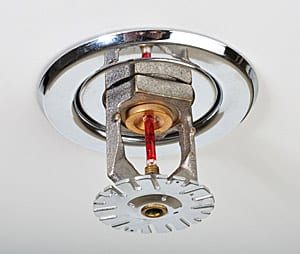Attention New York City building owners, property managers, architects! Over the past few years, many of you may have heard words “Local Law #26 of 2004.” One might ask, what is Local Law #26 (LL 26) of 2004 and how might it pertain to the fire sprinkler system (or lack thereof) of my building? This article is part 1 of a 4-part series that will help you to understand the content and requirements related to fire sprinkler systems of Local Law #26 (LL 26) of 2004.
New York City is home to a large stock of older buildings that are not equipped with automatic sprinkler systems. After 9/11, the World Trade Center Building Code Task Force was formed to review current sprinkler codes and suggest improvements. Their recommendations resulted in Local Law 26 (LL 26) of 2004, which retroactively would require upgrades for key systems in these older existing buildings. Since full sprinklering & other fire protection upgrades of older buildings is a time consuming and costly process, the law gave owners 15-years to comply, with reporting requirements in 7-year intervals (2005, 2011, 2018) to ensure progress was being made.
In essence, Local Law #26 (LL 26) of 2004 requires that by July 1, 2019, all existing office buildings, including buildings classified as Occupancy Group E (business), greater than or equal to 100 ft. in height be equipped with a fully complete, automatic fire sprinkler system. There are, however, two potential exceptions to this requirement:
- A building owner may be exempt from abiding by the complete requirements of Local Law 26 (LL 26) of 2004 if he/she demonstrates to the NYC Dept. of Buildings that provision of a new sprinkler system may pose structural hazards to the building.
- A building owner may also be exempt from abiding by the complete requirements Local Law 26 (LL 26) of 2004 if he/she demonstrates to the NYC Dept. of Buildings that the building is designated by the NYC Landmarks Preservation Commission as an interior landmarked building. One should note that either of the aforementioned exemptions may only apply to a specific, limited area of a building in which these conditions exist.
In subsequent articles in this series, we will dive deeper into our explanation of Local Law #26 (LL 26) of 2004 as pertinent to fire sprinkler systems. We will include a full breakdown of all fire protection work required by the local law, report filing requirements, tips for implementation and frequently asked questions and answers.
For your reference, the full body of Local Law 26 (LL 26) can be accessed here.
*IMPORTANT NOTE – It is not too late to start your full building sprinkler implementation project, but time is running out.
EP ENGINEERING provides building-wide sprinkler design and project management for multiple building owners seeking Local law 26 (LL 26) compliance across NYC.
Contact us today to discuss your Local Law 26 (LL 26) requirements and get your full building sprinkler implementation project on track.


